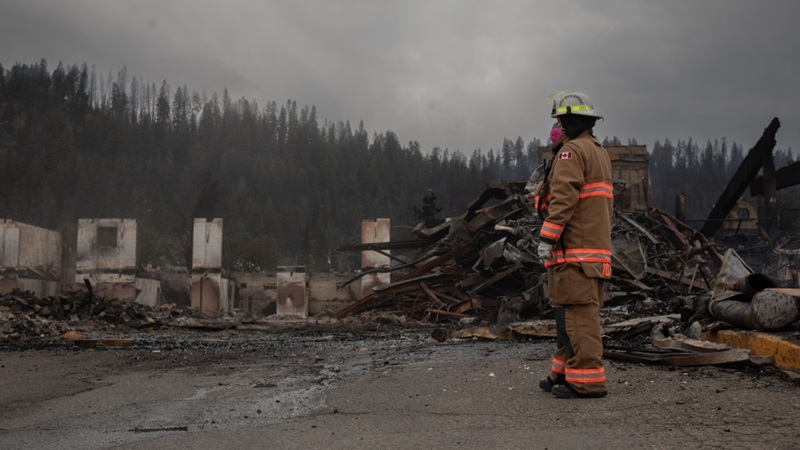
Suhayfa Sheik
Predicting natural events in Canada's climate.
Most Read Stories Today
-
Water Scarcity and Artificial Rainfall: The Positive and The Negative Effects of Cloud Seeding, including Health Hazards and Climate Implications.
-
Renewable Energy in Rural Areas: Challenges, Opportunities, and Successful Rural Projects
-
Pakistan's Agriculture at Risk Due to Climate Variability
-
South Africa's Recent Floods: Is Climate Change to Blame?
-
South Korea's floods: root causes and prevention strategies.
-
South Africa: Cape Town, A City Under Fire
-
The Human Cost of Climate Disasters
-
Our Oceans, Our Future: The South African Dilemma of Overfishing
-
Degenerative Impact of Hydrocarbons On The Environment.
-
Sustainable Urban Planning - Copenhagen and the Path to Climate Resilience
Droughts in the prairies are just one of many important effects of climate change that Canada will undoubtedly experience. High latitude nations like Canada are anticipated to be most affected by global warming, including an increase in the frequency and severity of extreme weather events.
This means that natural disasters like storms, forest fires, heat waves, floods, and droughts will likely occur more frequently in Canada, putting people's resilience to the test and making it harder for them to adjust to the country's changing climate. Despite the normal variability of the climate, recent alterations are exceptional and do indicate that something other than nature is at play.
The majority of climate scientists think that human actions are influencing the earth's climate. More greenhouse gasses are being released into the atmosphere as a result of burning fossil fuels for transportation, electricity generation, home heating, and manufacturing than would have happened naturally. The earth heats up more quickly as a result of the buildup of these gasses. For instance, the average global temperature during the last ice age was only 5 degrees lower than it is right now, and yet the majority of Canada was covered in thick glacial ice.
Scientists can predict patterns of climate change on the size of continents using computer models. Although it is much more difficult to predict how climate change would affect weather at the regional or local level, several forecasts of the potential impacts of climate change on Canada have been made.
In general, it is anticipated that climate change would have an impact on the frequency, seriousness, and length of extreme weather events. More droughts, more intense winter storms, more severe heat waves, fewer extreme cold snaps, heavier rains, thunderstorms, hailstorms, and tornadoes, significant changes in atmospheric circulation that could affect storm tracks and rainfall distribution, and large storm surge events of over four meters could all occur. As the temperature warms, it is anticipated that these catastrophes, which currently happen less than once every century, will occur roughly once every ten years.
Though predicting natural occurrences is never easy, it might be especially challenging to do so well in advance for extreme events. This is due to a number of factors.
First, since there are so many inherent uncertainties in natural systems, precise prediction is highly challenging. Second, occasionally there isn't enough information about natural systems to offer a reliable foundation for prediction. Finally, the limits of present technology preclude them from delivering the precise observations required to forecast natural disasters. For smaller-scale occurrences, prediction is more difficult (such as tornadoes). Additionally, the accuracy of predictions declines dramatically over time (i.e., short-term forecasts are far more accurate than long-term forecasts). The period of time between an event's prediction and its effects is very important. Effective and timely communication is feasible with enough notice for prediction.
The disaster management plan that is used is also significantly determined by lead time. It's crucial to give a warning informing people to take quick action, such as evacuating to less vulnerable areas like hills, if a flash flood is anticipated within the next 30 minutes.
On the other hand, if it is predicted that heavy rain will force a river to overrun its banks within the next few days, there is time to plan an evacuation or put emergency measures in place, including bolstering dikes or arming riverbanks with sandbags.
Even while disasters cannot always be avoided, being aware and ready helps lessen one's exposure to them. The process of responding to warnings involves multiple steps:
Recognizing the caution, deciding that the warning is reliable, establishing the danger is real, realizing how much the risk will impact you or your community, evaluating whether protective action is required, determining whether protection is possible, choosing the appropriate course of action and acting on it.

Terms & Conditions
Subscribe
Report
My comments